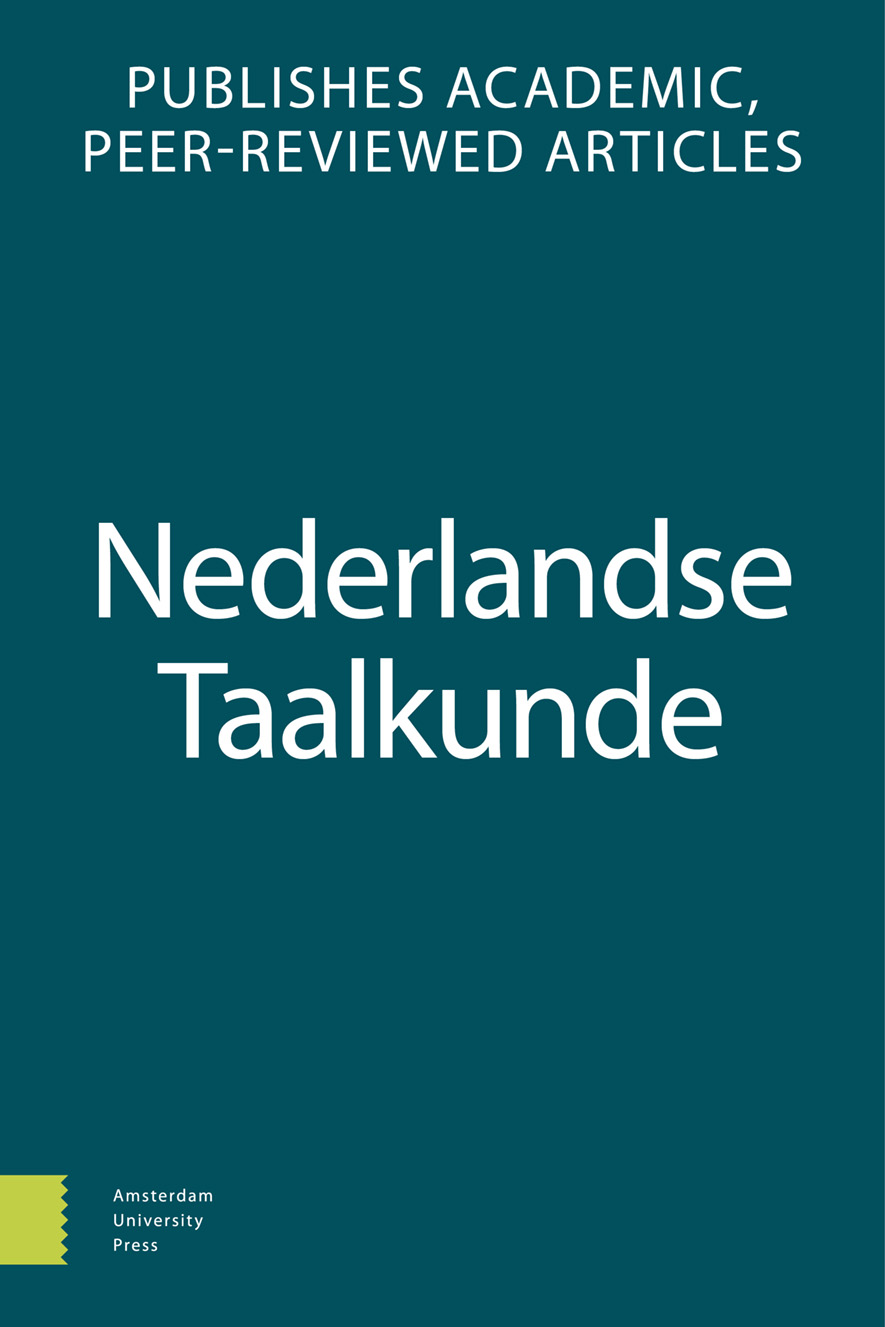- Home
- A-Z Publications
- Nederlandse Taalkunde
- Previous Issues
- Volume 25, Issue 1, 2020
Nederlandse Taalkunde - Volume 25, Issue 1, 2020
Volume 25, Issue 1, 2020
Language:
English
-
-
oa De verleidingen en gevaren van GrETEL*
More LessBy Jan OdijkAbstract Corpora are a useful and important source of evidence for linguistic research, but they are not the only kind of evidence, do not have any special status as evidence, and have their limitations. Recent very user-friendly applications such as GrETEL make it very easy to search in large and richly annotated corpora on the basis of an example sentence and without knowledge of a query language or the exact nature of th Read More
-
-
-
oa Een corpus waar alle constructies in gevonden zouden moeten kunnen worden?*
More LessBy Jelke BloemAbstract In this contribution, I discuss the use of automatic syntactic annotation in Dutch corpus research, using a case study of five-verb clusters. Large amounts of text can be annotated automatically, but the parser makes mistakes, while correct annotation is very important in linguistic research. How much of a problem is this, and how can we learn about the extent of these parsing mistakes? There are several approac Read More
-
-
-
oa Vissen naar variatie
More LessAbstract Belgian Dutch (BD) and Netherlandic Dutch (ND) are known to exhibit phonetic and lexical differences, but national variation in the syntax of Dutch has often been claimed to be quasi non-existent. This view is rooted in the fact that both laypersons and researchers are oblivious to national divergences in the grammar of Dutch (unless they are categorical and/or heavily mediatized), but also in the undisputed belief t Read More
-
-
-
oa Schaalvergroting in het syntactische alternantieonderzoek
More LessAuthors: Dirk Speelman, Stefan Grondelaers, Benedikt Szmrecsanyi & Kris HeylenAbstract In this paper, we revisit earlier analyses of the distribution of er ‘there’ in adjunct-initial sentences to demonstrate the merits of computational upscaling in syntactic variation research. Contrary to previous studies, in which major semantic and pragmatic predictors (viz. adjunct type, adjunct concreteness, and verb specificity) had to be coded manually, the present study operationalizes these predictors o Read More
-
-
-
oa Standaardnederlands, de sleutel tot integratie in Vlaanderen?
More LessAuthors: Chloé Lybaert & Ella van HestAbstract Standard Dutch, the key to integration in Flanders? About the challenges posed by non-standard Dutch to language learners in Flanders Flanders strongly encourages newcomers to take language courses to learn the official language, on the assumption that certified competence in Dutch will enhance integration. However, in Dutch L2-education the focus lies on Standard Dutch, and this contrasts to everyday spoken Read More
-
Volumes & issues
Most Read This Month
Article
content/journals/13845845
Journal
10
5
false
en

Most Cited Most Cited RSS feed
-
-
oa Goed of fout
Authors: Hans Bennis & Frans Hinskens
-
- More Less

